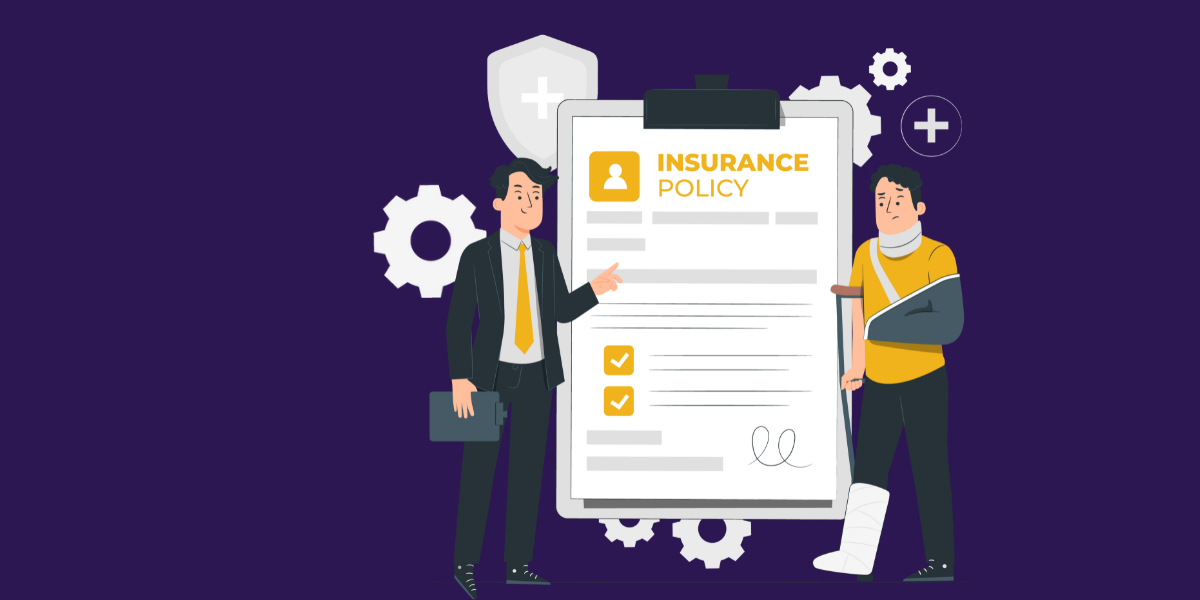OverviewDisability Insurance
What is your most valuable asset? Many people would probably answer their house, cottage, business, car or something else of monetary value. For most people however, the answer is actually their ability to earn an income. Being able to work provides you with the funds to pay for your other assets.


What is
Disability Insurance?
We like to think of disability insurance as insurance for your paycheque, insurance to protect your income. You wouldn’t think about going without insurance on your home or your car, perhaps even your cell phone, but many people have little to no insurance on their income. Disability insurance covers you when you’re unable to work. It can provide you with a tax-free monthly income to help cover your expenses and protect your loved ones if you become disabled due to injury or illness.
How Does
Disability Insurance Work?
Disability insurance is designed to replace a portion of your income by paying a monthly benefit during the period of time where you qualify. The process looks like this:
- Find the policy that best fits your needs, including the amount of coverage and any optional benefits to further customize your coverage.
- Make your required monthly premium payments.
- If you become disabled, file a claim.
- Once your policy waiting period ends (this is the number of days from the date of disability until the benefit starts – you select this when applying for your policy), you will begin receiving your monthly payments.
- Your monthly payments will stop when you are able to return to work or your benefit period ends (again, you select this at time of application).
Who Needs
Disability Insurance?
Like other insurance, the prospect of becoming disabled for any period of time might seem unlikely if you are young and healthy. However, in Canada, up to 40% of people will become disabled for a period of 90 days or longer before the age of 65. The reality is that many Canadian households would not be able to continue to meet their monthly payments if disabled for a period of 90 days or longer.
Disability insurance can replace a large portion of your regular paycheque. Depending on the level of coverage you select, you may be able to have coverage for anywhere from 80-90% of your normal take-home pay. You can never replace the full amount of your income because there would be no incentive to return to work, but replacing nearly all of your income is a great reason to be properly covered.
In situations where a person is disabled and doesn’t have coverage, it is very likely that they will have to sacrifice their retirement savings. Whether this means that they stop contributing, or that they have to dip in to their accounts – or maybe both – it can have a detrimental affect on their ability to ever reach their retirement goals. In addition, any amounts withdrawn from your retirement accounts will be taxed, so the impact is even greater.
Disability Insurance
Other Frequently
Asked Questions
How much does it cost?
The cost of premiums for disability insurance can fall in to quite a wide range of 1-9% of your salary. Some of the most significant factors in the price are:
Age
Just like life insurance and critical illness insurance, disability insurance is affected by your age. As you age, your premiums will increase, so getting coverage in place while you are young will help lock in your premiums at a reasonable rate.
Health
Similar to other types of insurance coverages, your health also affects your premiums. The healthier you are, the lower your premiums will be – yet another reason to get disability insurance while you are young and healthy. Your smoking status would also be considered a component of your health and would also affect your premiums.
Coverage amount
The amount of monthly benefit you select will also impact your premiums. The higher the coverage amount, the more risk there is to the insurance company, and therefore your premiums will increase. Your disability policy will have a maximum limit of coverage you can apply for, which must be less than your current income while you are working.
Occupation
Depending on the type of job that you have, it can reduce, or increase your premiums. Higher risk jobs will result in increased premiums. An important thing to remember is that not all disabilities are physical, or are the result of an accident. Even though your job may not be dangerous, there are other causes of disability that could affect you.
Benefit period
When applying for a disability policy, you will also be able to select your benefit period. This is the maximum period of time you will be able to receive the benefit (that could be 2 years or until age 65 for example). The longer the benefit period you select, the higher the premiums.
Waiting period
Your policy waiting period is the number of days after the onset of the disability before you are eligible to receive payment. You are able to select this at the time of application. The longer the waiting period, the less expensive your policy premiums will be.
Riders
Additional customizations added to your disability policy are called “riders”. Disability insurance has a number of different riders that will allow you to customize your policy to fit your needs. The riders available include future insurability option (which allows you to increase your coverage in the future as your income grows without any medical underwriting), cost of living adjustment (to keep pace with inflation), or many other options.
Do I really need my income covered?
We’ve alluded to the fact that your ability to earn an income is your greatest asset – but how do we know that? Here are some projections based on various income levels at different stages of their careers. These calculations assume a 2% raise each year and a retirement age of 65.
| Salary | Age 25 | Age 30 | Age 40 | Age 50 |
| 60,000 | 3,624,119 | 2,999,669 | 1,921,818 | 1,037,605 |
| 75,000 | 4,530,149 | 3,749,586 | 2,402,272 | 1,297,006 |
| 90,000 | 5,436,178 | 4,499,503 | 2,882,727 | 1,556,408 |
| 120,000 | 7,248,238 | 5,999,337 | 3,843,636 | 2,075,210 |
| 150,000 | 9,060,297 | 7,499,172 | 4,804,545 | 2,594,013 |
| 200,000 | 12,080,397 | 9,998,896 | 6,406,060 | 3,458,683 |
| 250,000 | 15,100,496 | 12,498,619 | 8,007,575 | 4,323,354 |
As you can see from the chart above, the total amount of expected income at any age/salary is quite significant. It is not hard to see why your ability to earn an income is your greatest asset – especially in the early stages of your career, when you have the majority of your working years ahead of you.
What benefit amount could I qualify for?
Although the amount of coverage you qualify for may differ slightly, the following amounts are the approximate maximum monthly payments you could receive tax-free, if you suffer a disability. The actual amounts will vary, depending on your specific circumstance, but it will be determined at the time of application and disclosed in your policy documents.
| Annual income | Maximum monthly benefit |
| 40,000 | 2,500 |
| 50,000 | 2,975 |
| 70,000 | 3,950 |
| 100,000 | 5,200 |
| 150,000 | 6,975 |
| 250,000 | 10,000 |
| 500,000 | 16,050 |
| 1,000,000 | 25,000 |
Is my coverage through work enough?
Having group insurance coverage through your employer is a great foundation for your disability insurance coverage, but it usually only provides basic coverage. Adding a personal disability policy to your coverages can compliment your group insurance, by working together to provide protection for you and your loved ones if you are unable to work.
| Group Coverage | Individual Coverage | |
| What amount of coverage can I get? | Coverage amounts are usually limited. | You select the coverage amount that is right for you. |
| Are there flexible options to customize? | It is likely that your employer picks the coverage options. | You decide the coverage amount and how long you need it. |
| Am I able to change my coverage? | You may be able to make changes, usually once per year, or if there is a significant change in your personal circumstances. | You can make adjustments to your coverage throughout the life of the policy. |
| What happens if I change jobs? | Either your coverage will end or you may have an opportunity to convert to individual coverage at a higher premium cost to you. | Your coverage is not affected, it is not tied to a specific job or company. |
| What is the cost? | Typically, low costs with employer paying for a portion of the premiums. | Usually higher cost than group coverage because you pay the full premiums and it is more complete coverage. |
| Will the cost change? | Costs can change annually. | Costs are locked in for the duration of your policy. |
Although many people can understand and appreciate the value of a disability policy, most don’t take the step to purchase one for themselves. All of the different options and terms can become confusing and overwhelming, making it even more important to receive proper advice and guidance. Our team at Hometown Life Insurance focuses on educating and providing our clients with the service and comfort they desire as they seek to protect their family. Let us assist you in simplifying and securing protection for you and your loved ones, no matter what happens.
Are mental health claims covered by disability insurance?
- Yes, in fact, mental health claims are quickly becoming the most common disability insurance claim. The waiting period on a policy would still apply and just like any other disability claim, there would be payments until you are able to return to work or until your policy coverage ends, as determined at time of application by the client.


